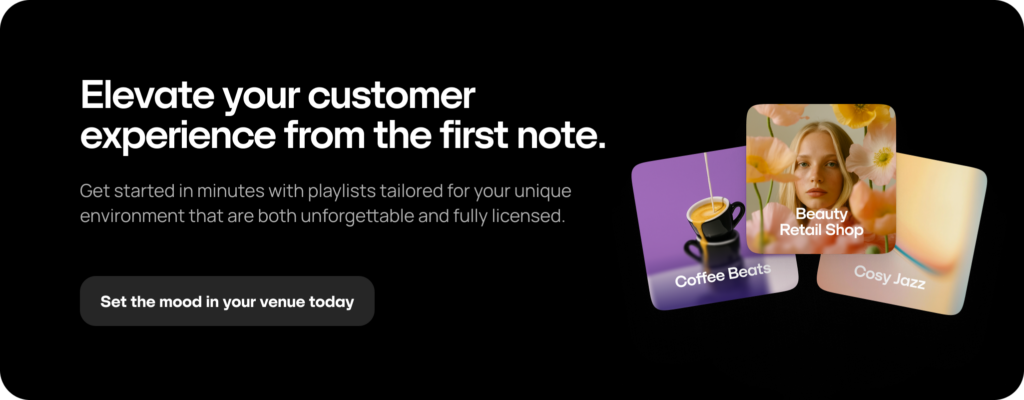Top 6 ideas to create a strong restaurant brand identity

In today’s competitive food and beverage landscape, creating a strong brand identity requires more than just offering quality delicious food. To achieve success, restaurants need to have a distinctive brand personality that resonates with the target audience, helps build customer loyalty, and leaves a lasting connection. Continue reading the article and explore how to develop an effective restaurant branding strategy that will allow your hospitality venue to stand out from the crowd


What is restaurant brand identity?
A restaurant brand identity goes beyond the name and logo. In fact, it encompasses a variety of attributes that include visual elements, atmosphere, client service, social media representation, and the overall customer experience. By elaborating a successful HoReCa brand, you will manage to create a memorable impression, encouraging diners to choose your restaurant over others.
Top ideas to create a restaurant brand strategy
1. Use authentic storytelling
Storytelling is a sure way to develop a strong brand identity. In order to work out a unique restaurant personality, you can showcase the journey you’ve passed and the inspiration you have. For example, establishments can tell their stories, share family traditions, and describe a culinary adventure. This should be something that adds a personal touch or produces an exceptional customer experience beyond food and client service, making people feel connected to the brand.
You can use various sources to implement this idea—for instance, website, social media, online magazines, interviews—to weave the story seamlessly into your restaurant brand identity. Authentic storytelling will help you create a soul of the HoReCa place, captivating the audience and increasing recognition.
2. Create a distinctive visual identity for the restaurant
A visual identity is a fundamental aspect of a restaurant brand that aims to create instant recognition and evoke specific emotions. It encompasses logos, colors, design elements, and interior decor that communicate the venue’s personality.
To make the venue’s personality appealing and distinguished, you should come up with a recognizable logo, make a beautiful interior design, and ensure consistency across all platforms. It is important to meet the target audience’s needs and expectations while reflecting the story of your restaurant.
When crafting a brand identity, pay special attention to colors. They play a vital role, affecting consumer perception and setting the tone for the dining experience. Every design component should align with your restaurant brand narrative. If you have, say, a rustic-themed restaurant, you can apply earthy tones and natural textures. In case you own an Italian restaurant, you can use a warm color palette, rustic furniture, and pictures of Italy. To give you a more clear understanding of this branding technique, let’s consider an example of Pavillon Bar & Kitchen.
Based in the heart of Lausanne, Switzerland, Pavillon Bar & Kitchen was opened on the site of the former ice cream shop from the 1980s. Striving to elaborate a unique brand identity and pay respect to its roots, the bar employed design craftsmanship and traditional materials that reflect the character of the surroundings. To bring more space to the hospitality place, the designer reframed colors and made walls black. She also used only high-quality materials, involving marble tables and wooden floors. Every detail has its own story. For instance, the silver cutlery is from an old hotel in the UK.
3. Provide a unique culinary voice of your restaurant
If you’re wondering how to create a brand identity for your restaurant, think about a unique culinary voice you can deliver. It is possible to compare it with a language your HoReCa establishment speaks through the menu and goes beyond food taste. A culinary voice is not only about the taste of dishes. In fact, it includes style, ethos, and innovation that sets your hospitality venue apart from others. Cuisine and cooking can become a significant restaurant branding inspiration. A farm-to-table restaurant, for instance, can emphasize locally-sourced ingredients, this way promoting sustainability. In case your goal is to show an avant-garde innovative spirit, you can use molecular gastronomy. To cater to health-conscious diners, you can provide special-diet and healthy menus as part of a unique culinary identity.
4. Play brand-fit background music
Background music should be an important part of a restaurant branding strategy. If used properly, music can allow you to design a distinctive brand identity and offer a memorable delightful customer experience. By streaming brand-fit music for restaurants, it is possible to significantly boost consumer engagement, retention, and even increase revenue. A survey of 2,100+ diners revealed that playing brand-fit music can help restaurants enhance client satisfaction and sense of well-being rather than when switching on random popular songs. MRC determined that 65% of respondents found that providing a compelling atmosphere through music is essential to public places.
Music can also communicate the story. For example, Tin Drum Asiacafé is an Atlanta-based restaurant named after the tin drummer who played on his drum to entertain the residents of ancient villages. To develop a strong distinguished brand identity, the owner picks music playlists with drum and bass tunes.
5. Leverage the power of community engagement
Community engagement is a cornerstone in a restaurant brand identity that helps build loyalty and induce a feeling of belonging to something special. By participating in various activities (local charities, exhibitions, etc.) and collaborating with local businesses, a restaurant can attract more people and strengthen brand positioning. You can also hold themed events to boost restaurant brand presence.
Social media is probably the most effective tool to create a community, engage diners, and develop connections. Here you can share visually appealing content, cooking recipes, behind-the-scenes moments, and client testimonials. In addition, you should interact with the audience in social networks, providing fast responses to their comments and messages. Communicate with customers through polls, contests, and interactive posts to grow a digital community. Thanks to this, you will manage to develop a distinctive brand identity, increase recognition, and drive sales.
6. Use consistent restaurant brand messaging
When thinking about how to create a brand identity for your restaurant, make consistent brand messaging a top priority. For this purpose, you should provide a unified voice across all touchpoints that involve the menu, emails, marketing materials, and social networks. Brand messaging should align with the restaurant’s narrative. For instance, if your venue is centered around authenticity, you can weave this aspect in every communication, emphasizing genuine flavors and traditional techniques.
Final words
Developing a restaurant brand requires creativity, consistent messaging, and a client-centric approach. By implementing branding techniques, you will deliver a long-lasting recognizable impression, improve customer loyalty, and encourage an emotional connection with your hospitality place. Remember that a successful brand is not just about food quality, which is surely very important. It is about the entire customer experience across all touchpoints, from interior design and service to social media representation. Good luck to you on the way to creating a strong restaurant brand identity!


